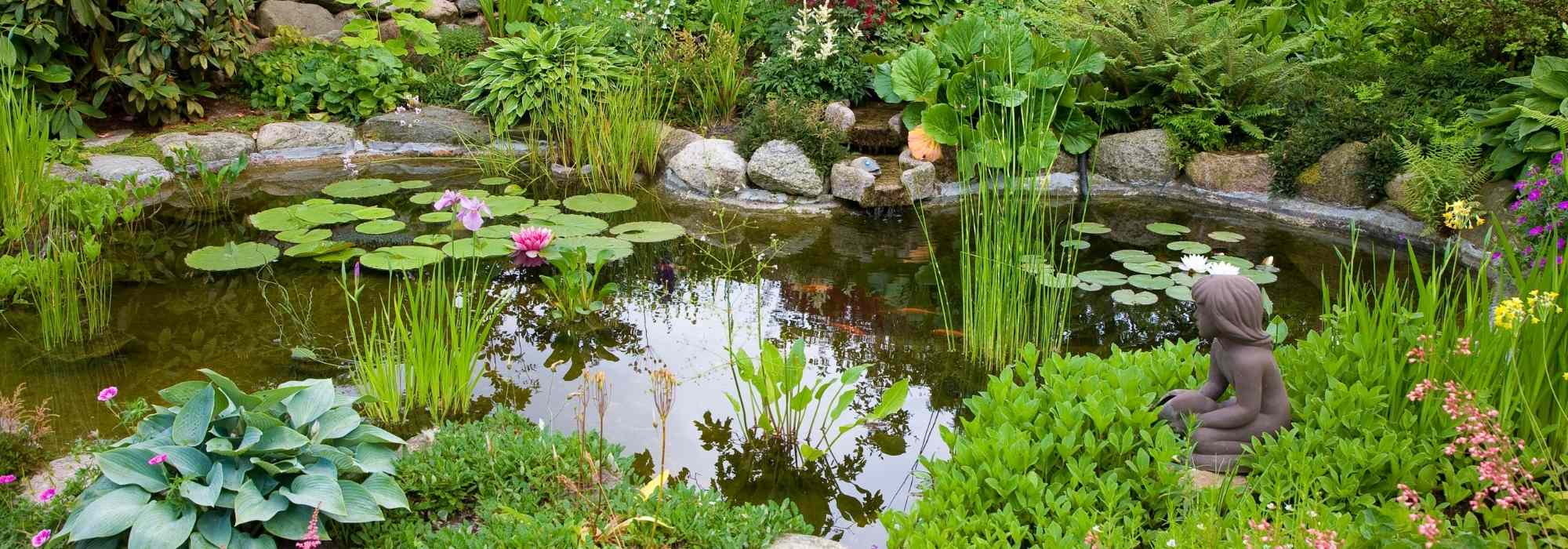
Mistakes to avoid when installing a garden pond
Avoiding and correcting common mistakes when installing a pond
Contents
Creating a garden pond is both an exciting and complex project. Recreating a small aquatic ecosystem requires the gardener to have a wealth of knowledge about this medium. Pond construction flaws, water quality, light levels, depth, and volume will be some of the essential parameters to study in order to achieve a stable and aesthetically pleasing result.
Discover the main mistakes to avoid when creating a garden pond or a natural pool and our tips for successful landscaping.
The main mistakes in a nutshell
| Common mistakes | Why it is a problem | Good practice to adopt |
|---|---|---|
| Poor location | Excessive exposure, leaf drop, difficult maintenance | Choose a clear, bright spot without direct sunlight |
| Inappropriate depth or shape | Risk of overheating, difficulty overwintering | Provide several depth zones, at least 60 cm |
| Poor quality or improperly installed liner | Leaks, premature wear, unattractive appearance | Use an EPDM liner and protective felt |
| Lack of filtration or oxygenation | Algae growth, stagnant water | Install a pump with an appropriate filter and a water feature |
| Too many or too few aquatic plants | Unbalanced ecosystem, more complex maintenance | Vary plants: floating, emergent, oxygenating |
| Too rapid or massive introduction of fish | Polluted water, stressed or sick fish | Wait 3 to 4 weeks before introduction, limit their number |
| Lack of safety | Risk of falling, especially for children | Provide a grid, a visible border, or secure landscaping |
| Neglected maintenance | Debris accumulation, murky water, imbalance | Carry out light but regular maintenance according to the season |
Read also
10 aquatic plants, submerged or floatingPoorly choosing the location of your pond
One of the biggest mistakes when installing a water feature is choosing the wrong location. Placing a pond in an aesthetically pleasing or practical spot is not enough to ensure its longevity and health.
Here are the worst ideas when selecting its placement:
Placing your pond under a large tree or shrub
Among the bad ideas, this one ranks high: the roots of woody plants will pierce your geotextile and then puncture your liner. One day, you may find your pond dry, with your fish belly up… which is rather discouraging as it means you will have to start all over again!
Leaves will also clog the water’s surface in autumn and silt up the pond. Consequently, oxygen levels will decrease, and aquatic plants will suffer from a lack of photosynthesis.
Placing your pond in full sun
While sunlight is crucial for the functioning of your small ecosystem (oxygenation of the water by plants needing light), a lack of shade is undesirable: evaporation and temperature fluctuations in your water will make life difficult for the animals in your water feature.
Ideally, you should place your pond a few metres away from a wall, hedge, or any other obstacle that can shade your pond during the hottest hours in summer (from 3 PM to 6 PM).
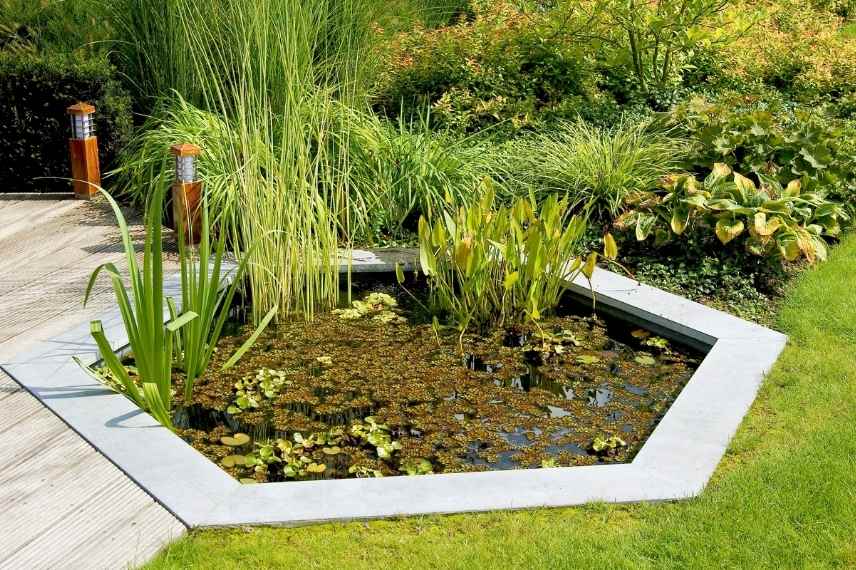
Be careful not to place your pond in full sun
Allowing access to children
Regardless of the depth of your pond, an accident can quickly occur if children are left unsupervised. Fence off the pond with a picket fence, for example, or position it so that local children cannot see it. This is a safety measure.
Placing your pond near resinous plants
Aside from the root issue mentioned earlier, the needles from these plants will acidify and sterilise your pond. This is very harmful to the life of this fragile habitat.
Too little vegetation in your pond
This is a classic mistake in garden ponds. Aquatic plants are not just a decorative element but also an essential link for its balance and sustainability. Plants purify and oxygenate the water while providing shelter and food for aquatic wildlife. They allow many organisms to hide (notably herons) and shade the banks during hot weather.
In the case of under-planting combined with an excess of fish, you will inevitably be overwhelmed by the dreaded green algae. This is a sign of an unbalanced pond lacking in vegetation.
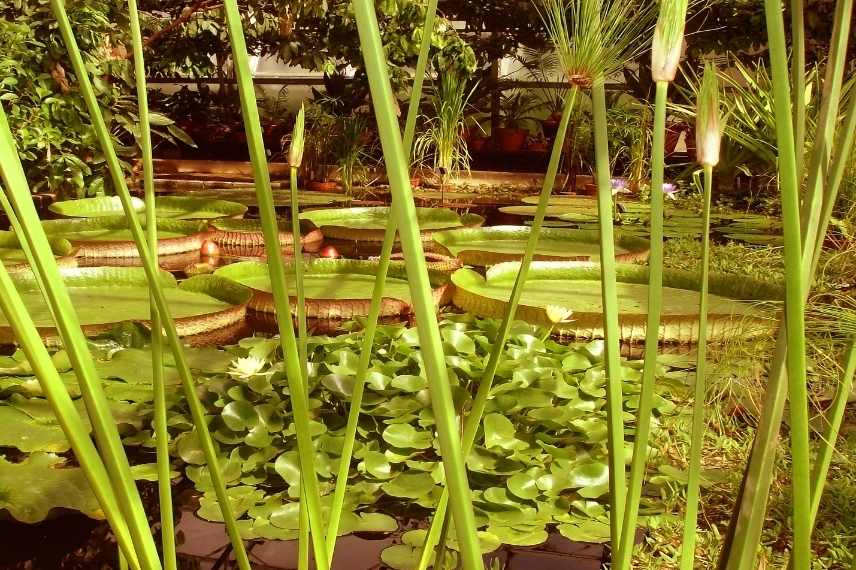
Poorly designing your pond
There are several ways to ruin the design of a pond. Here are the most notable examples:
Not checking the level before filling with water
Make sure the basin is straight! If your basin is slanted, water will flow to one side, potentially causing flooding in your garden and even… your home.
From an aesthetic point of view, part of the liner or wall will be exposed to the gardener’s eye, which will look particularly unsightly!
Not planning levels for vegetation
A water lily has different requirements than an iris or a reed. You will understand that aquatic plants do not distribute themselves randomly in nature and each has its preferred “zones.” By forgetting to create different levels, you significantly reduce the number of plants you can introduce, making your pond less attractive to the eye and wildlife. Therefore, avoid cubic or rectangular ponds with vertical walls.
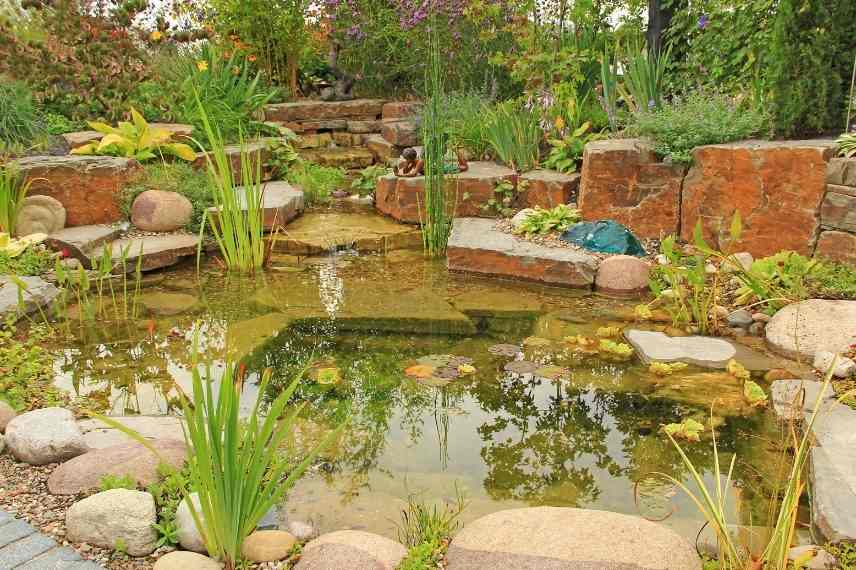
Plan for different levels for plants from wet soil to submerged ones
Giving the pond a too complex shape
When lining your pond, a complex shape will give you a hard time and especially a multitude of folds to hold down with stones in your pond. Additionally, it is more difficult to calculate the surface area of liner to purchase under these conditions. Opt for round or oval shapes.
Creating a tiny pond
Aquarists will confirm that the smaller the volume of water, the more complicated it is to balance. A small volume of water will heat up quickly, be sensitive to organic matter input (pollution), and may require an expensive filtration system!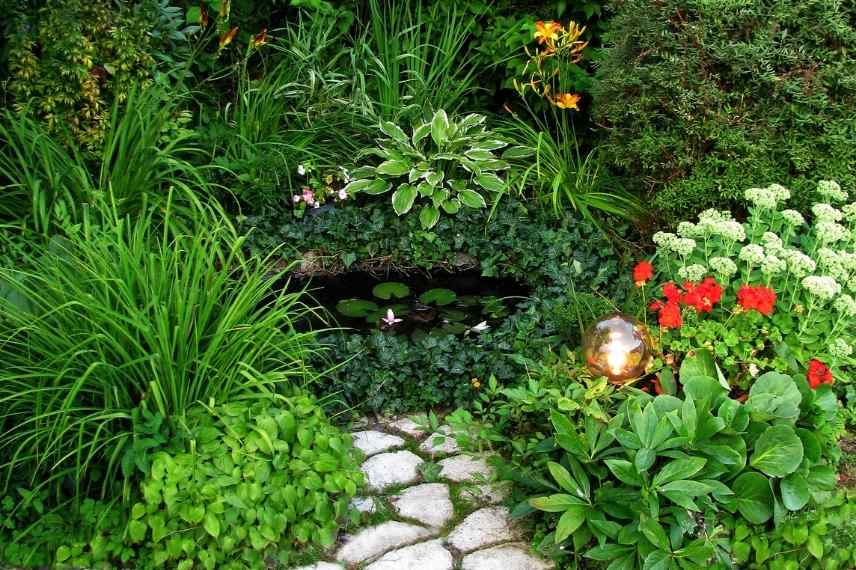 A very small pond will become problematic over time…
A very small pond will become problematic over time…
Neglecting depth
Besides the limited choice of plants to install in a pond that is too shallow, you will be at the mercy of climatic conditions. Heavy rains or, conversely, extreme heat and drought will make it difficult to stabilise the water level. You will also have to forgo the potential frogs hibernating underwater at a minimum depth of 80 cm.
Not planning for filtration or aeration systems
Without filtration or circulation, the water in the pond stagnates, which encourages rapid algae growth and attracts mosquitoes. Poorly oxygenated water becomes depleted of beneficial microbial life and quickly turns murky or smelly. This imbalance makes the pond unsightly and difficult to maintain, especially during warm periods. Even in a small pond, it is important to install a pump equipped with a filter suitable for the water volume. A fountain or water jet also helps to oxygenate the water while providing a pleasant decorative and sound effect.
Neglect aesthetics
Ponds add a touch of freshness, beauty, and daydreaming to our little paradises. However, there are some taste or installation mistakes to avoid to ensure you are not disappointed with the final result.
Do not conceal the liner
Liners or preformed ponds are very practical, but they are not exactly glamorous when they protrude from the ground on the banks. To address this issue, there are a few tricks to hide them. Ground cover plants, jute cloths, or decorative stones are all assets for concealing the problem. It goes without saying that a pond created on a flat site and at level will greatly reduce this concern.
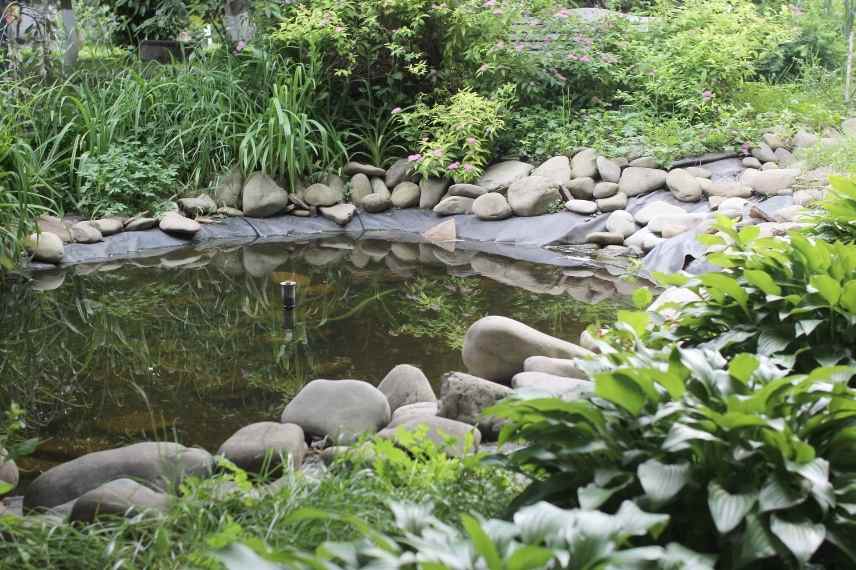
Pond nearing completion with rockwork on the liner
Install a “pool-type” liner
When it comes to poor taste and ugliness, it’s hard to do worse! So, leave this type of waterproofing to private pools. The black colour of a liner is much more discreet!
Introduce a pile of fish
Remember: you are trying to beautify your garden, not create a fishery. Introducing a few fish is great fun for children and brings life to the water feature, but in excess, they will cause you numerous problems!
- They will pollute the water with their waste and promote the growth of green algae due to the amount of nitrates excreted.
- Overpopulation of fish will require you to install a filter and/or a settling pond to filter the water, which can be very costly!
- Overcrowded fish will eventually become ill due to the close quarters in the water. You will need to resort to various antibiotics and other questionable substances to resolve the issue.
- They will inevitably devour the eggs of frogs, toads, newts, as well as the larvae of dragonflies and all other invertebrates finding refuge in your pond. Your pond will therefore be less balanced and lively than with reasonable proportions of fish.
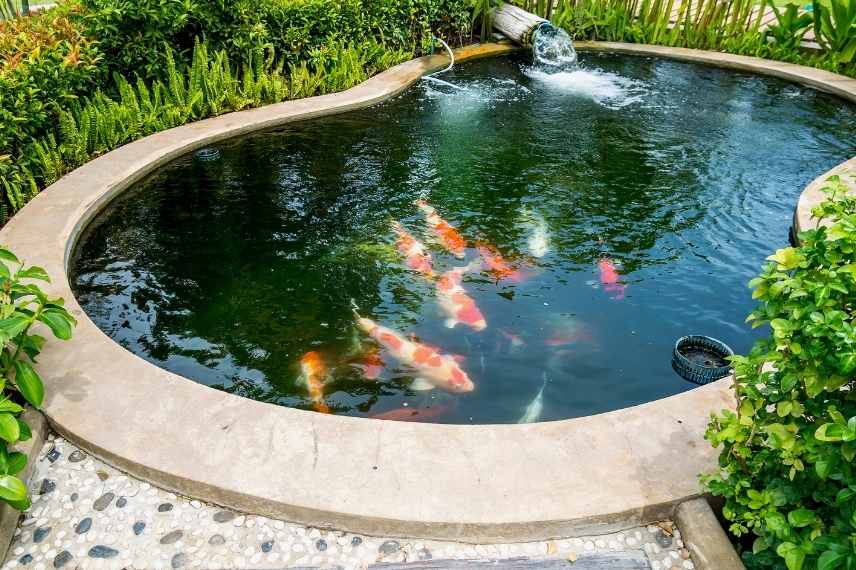 A pond hosting only fish, without any vegetation… Beware..
A pond hosting only fish, without any vegetation… Beware..
- Subscribe!
- Contents
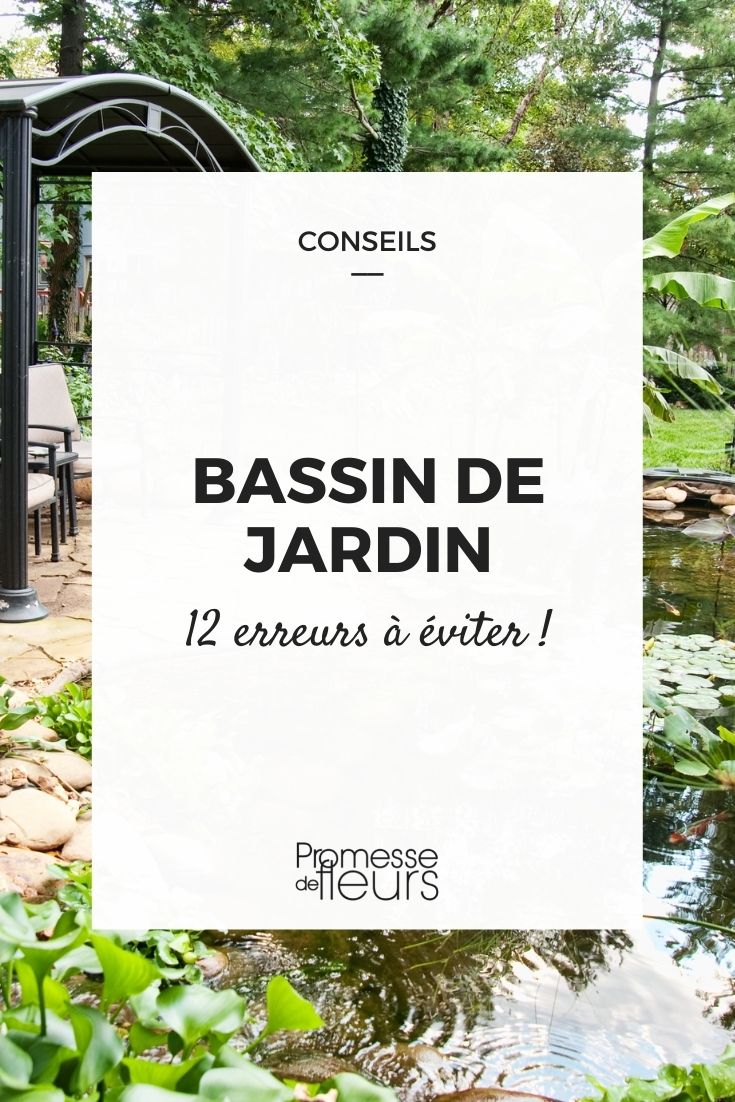






























Comments